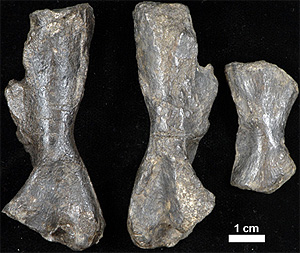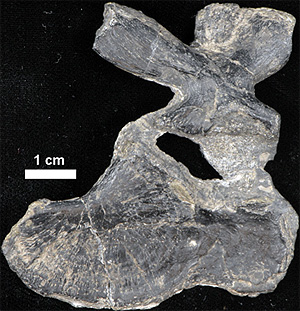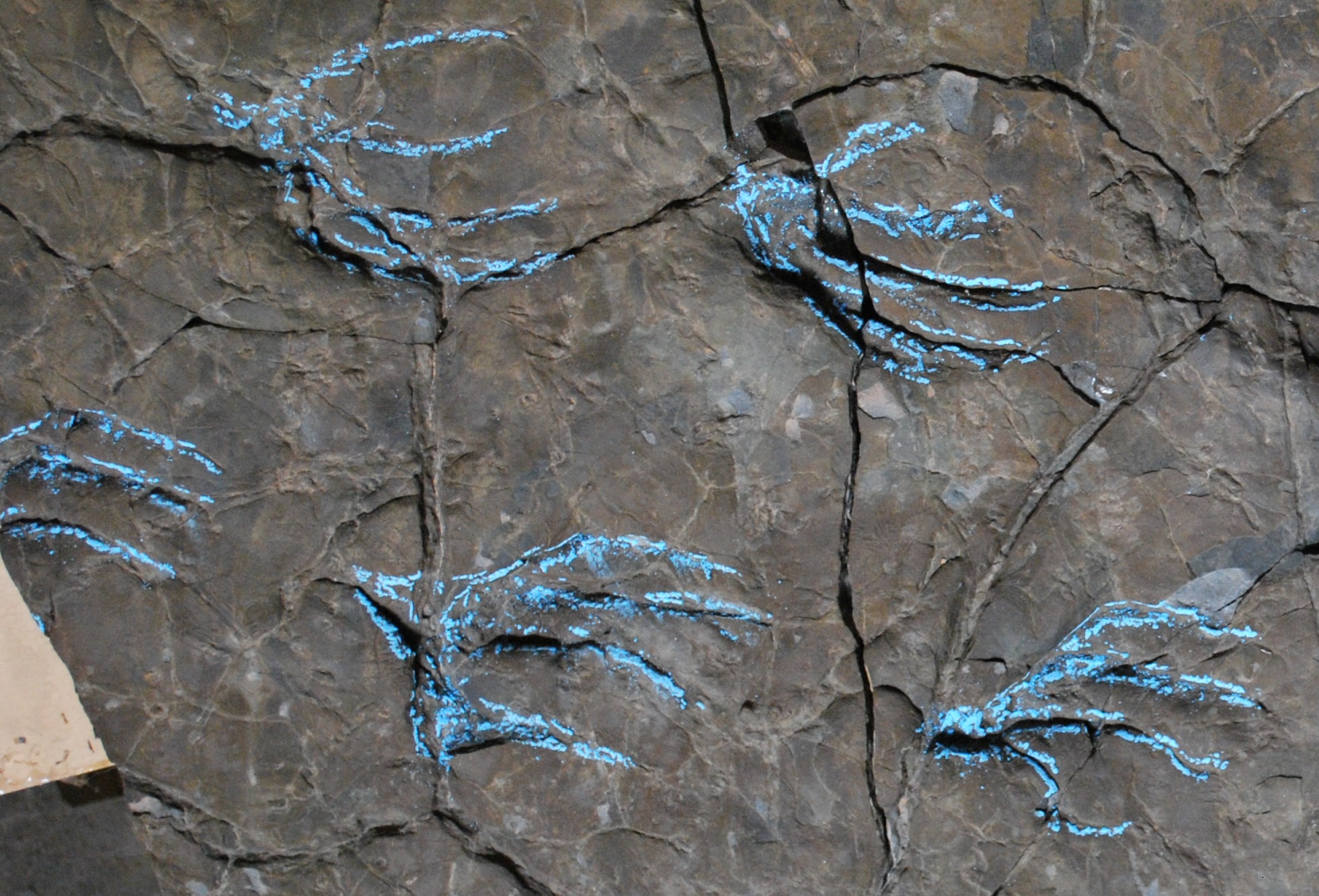Tetrapod bones are rare finds at Blue Beach, but then again, this is the middle of Romer’s Gap! Compared to the rest of the world, these few fossils look like an avalanche of new material.

Paired femora and tibia, Whatcheeriid tetrapod

The oldest pelvis in the western world is this spectacular specimen from Blue Beach. It belongs to a whatcheeriid, the most completely-known species at the site.
In actuality, the finds at this site are surprisingly rich, showing that a highly diversified community of tetrapods existed during the middle of a supposed ‘near-extinction’ event, when tetrapod life was theoretically all but extinguished. Blue Beach fossils are the first indication this is not so. Instead, we can now say that terrestrial tetrapods diversified earlier, and more completely than was previously imagined. It appears that this hypothesized near-extinction event is, instead, a matter of a lack of preservation.
Scientists have long agreed that tetrapods evolved out of lobe-finned fish sometime prior to the Late Devonian (before 360 mya). These initial tetrapods didn’t give rise to the secondary tetrapod groups who form the first successful amphibians-fauna. The stem of the land-animals leading to today has never been seen. It seems the all-important moment of their origins occurred sometime during Romer’s Gap.
What scientists still have not unraveled, and what is herein termed Evolutions Greatest Mystery, is just where and when these first land animals evolved from a common ancestor into so many diverse groups, and just what were the primitive characters and common stock that gave rise to everything we’d call a backboned “land animal” today? Since there were no fossils in Romer’s Gap, there was nothing whatsoever to solve these questions with.
Blue Beach tetrapods belong to several of these important lineages, and are themselves much older than anything examined before. Considerable research interest in these has begun with Cambridge University in the U.K., and with McGill and Calgary universities here in Canada.

These tetrapod femora (thigh bones) show significant differences. Finds like these are very important.
The Blue Beach tetrapod bones being studied indicate that at least five species were present in the Blue Beach fauna. Temnospondyls, whatcheeriids, anthracosaurs and possibly one Devonian-style relict group are now known from Blue Beach. A great deal of work must still be done before our picture of these tetrapods becomes clear. It appears that they are surprisingly advanced, despite their great Geological age, indicating that the origin of land animals was significantly earlier than 350 mya.
When we analyze the footprint fossil record at Blue Beach, it seems there are at least two species that we have not yet found in the bone record. One of these was quite a small tetrapod, suggesting it was specialized for life in the forest — in puddles and on the damp forest floor. Another was quite large and walked like the later reptiles would. The shape of its foot was eerily similar to the feet of advanced reptiles known as pelycosaurs, but yet the Blue Beach track-maker was at least 40-million years before the pelycosaurs. Pelycosaurs are more closely related to mammals than they are to dinosaurs! We could be looking at a very early representative of the mammal lineage!

Attenosaurus tracks resemble those of large reptiles, but Blue Beach was 40-million years before the arrival of reptiles. Blue chalk was used to temporarily highlight the tracks.
The early record of tetrapods still doubtless holds many surprises. The theme seems to be a familiar one – most of the important evolutionary transitions or origins, be it hominid to Homo sapien, wolf to dog, or fish to tetrapods — appears to occur swiftly enough that transitional forms are almost never seen. The true ‘common ancestor’, or first members of any groups these spawn, might already appear radically evolved by the time we see their oldest fossil remnants.
The rewards of biology are great when it comes to the study of the first tetrapods. Any little fact we glean can subtly alter the way in which all later land animals are interpreted. A fuller understanding of the primitive character states will benefit the entire field and all aspects of vertebrate study.